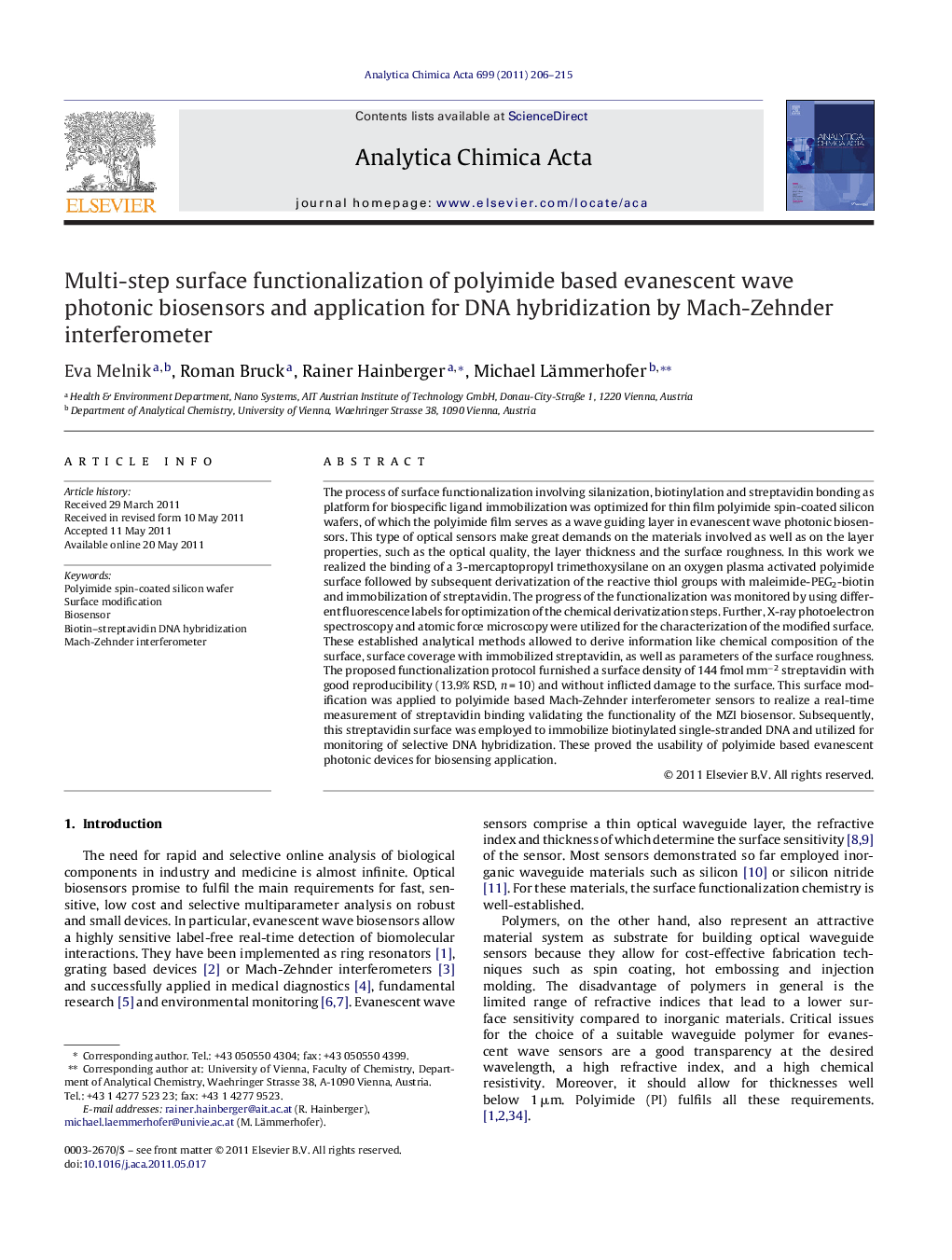| Article ID | Journal | Published Year | Pages | File Type |
|---|---|---|---|---|
| 1167142 | Analytica Chimica Acta | 2011 | 10 Pages |
The process of surface functionalization involving silanization, biotinylation and streptavidin bonding as platform for biospecific ligand immobilization was optimized for thin film polyimide spin-coated silicon wafers, of which the polyimide film serves as a wave guiding layer in evanescent wave photonic biosensors. This type of optical sensors make great demands on the materials involved as well as on the layer properties, such as the optical quality, the layer thickness and the surface roughness. In this work we realized the binding of a 3-mercaptopropyl trimethoxysilane on an oxygen plasma activated polyimide surface followed by subsequent derivatization of the reactive thiol groups with maleimide-PEG2-biotin and immobilization of streptavidin. The progress of the functionalization was monitored by using different fluorescence labels for optimization of the chemical derivatization steps. Further, X-ray photoelectron spectroscopy and atomic force microscopy were utilized for the characterization of the modified surface. These established analytical methods allowed to derive information like chemical composition of the surface, surface coverage with immobilized streptavidin, as well as parameters of the surface roughness. The proposed functionalization protocol furnished a surface density of 144 fmol mm−2 streptavidin with good reproducibility (13.9% RSD, n = 10) and without inflicted damage to the surface. This surface modification was applied to polyimide based Mach-Zehnder interferometer sensors to realize a real-time measurement of streptavidin binding validating the functionality of the MZI biosensor. Subsequently, this streptavidin surface was employed to immobilize biotinylated single-stranded DNA and utilized for monitoring of selective DNA hybridization. These proved the usability of polyimide based evanescent photonic devices for biosensing application.
Graphical abstractFigure optionsDownload full-size imageDownload as PowerPoint slideHighlights► We realize a biosensing platform for polyimide evanescent photonic wave sensors. ► We show that the surface functionalization via silanisation and biotinylation followed by streptavidin immobilization do not destroy or damage the thin polyimide film. ► A highly dense streptavidin layer enables the immobilisation of biotinylated ligands such as biotinylated ssDNA for the selective measurement of DNA hybridization.
